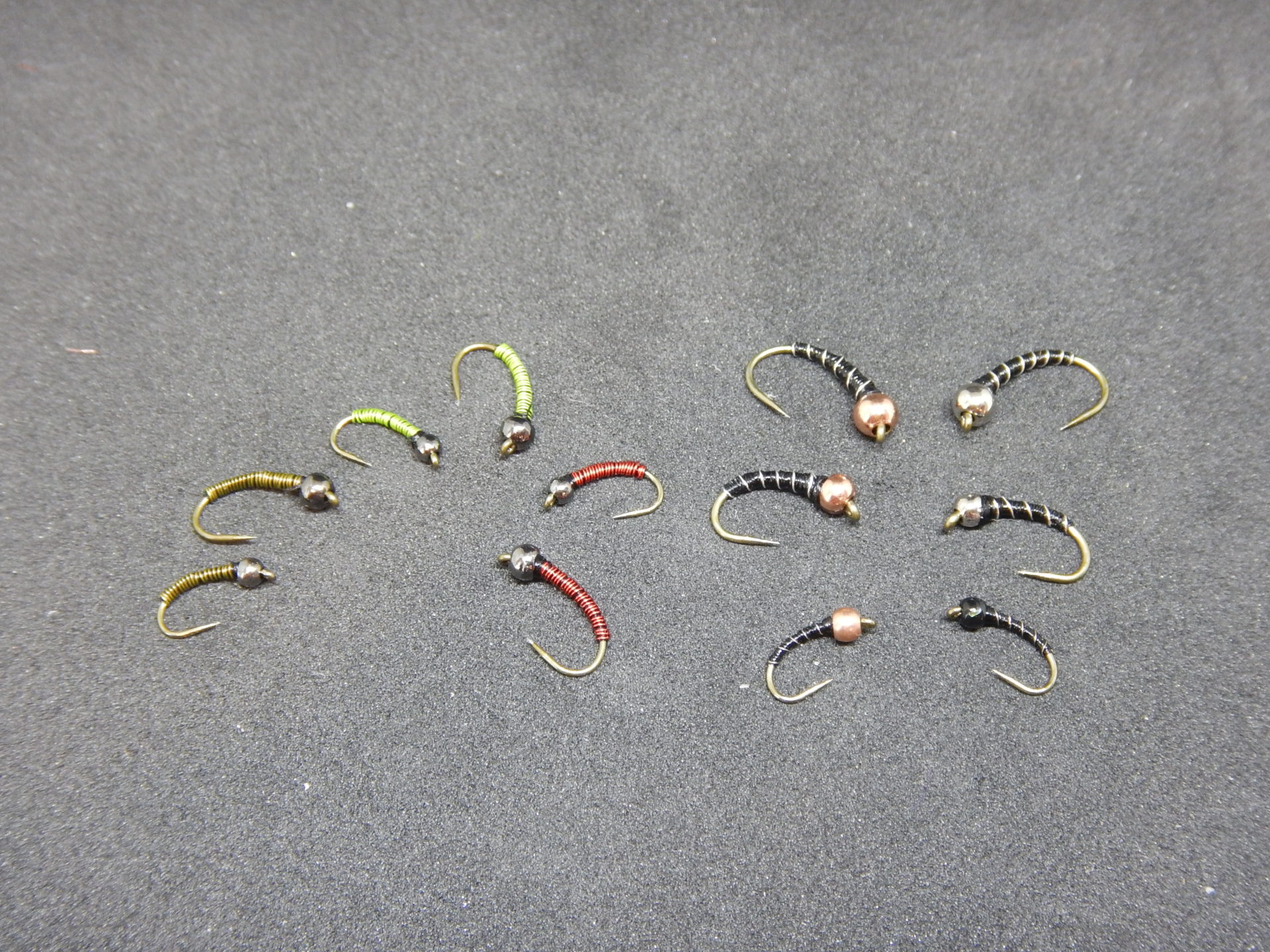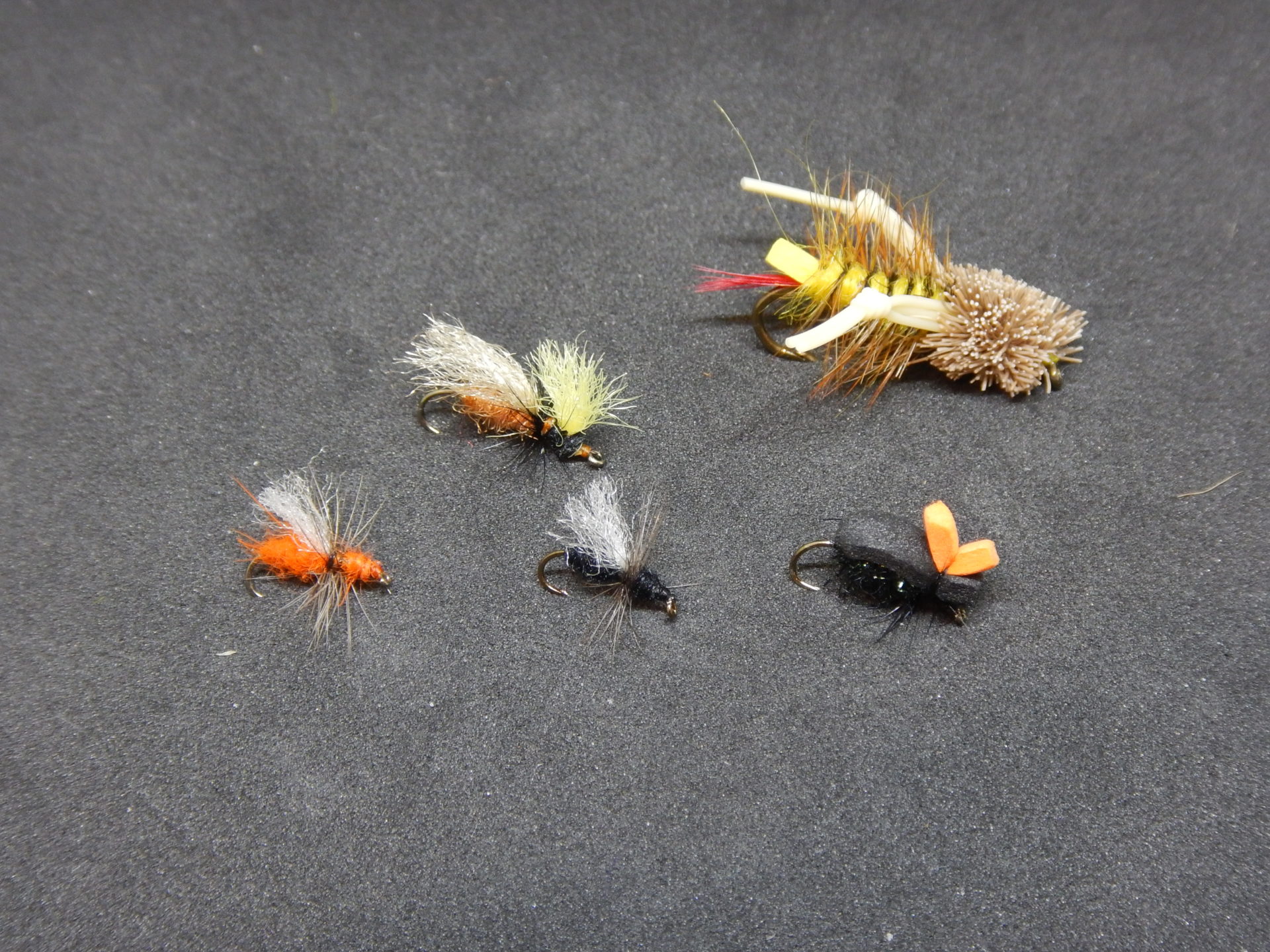Most anglers match the hatch for mayflies, stoneflies and caddisflies when fishing rivers, but don’t often venture into imitating midges (chironomids) and terrestrials. The aforementioned insect orders are around most of the time and imitating their nymphs is consistently successful. In comparison, chironomids are tiny and imitating them requires a subtle and gentle approach, and terrestrials, while big and bulky, are limited and sporadic in their availability. As a consequence, many anglers ignore chironomids and terrestrials, but there are times when imitating them will save the day.
Advertisement

Midge Or Chironomid?
Midges belong to the insect order Diptera, or two (Di) winged (ptera) flies, and include blackflies, mosquitoes, no-see-ums and the largest family, the chironomids. The life cycle of chironomids in rivers are the same as those in still waters. It starts with an egg that hatches into a larva living on the bottom. The larva eventually transforms into a pupa that rises to the surface, where the adult crawls out. Chironomids only need a few months to complete a life cycle, and many have two, three or even four generations in a fishing season.
Chironomids are one of the most diverse aquatic insect families in British Columbia. There are probably hundreds of species in BC rivers, but they often look and behave like one another. Although more synonymous with fishing still waters, chironomids are also important when fly-fishing rivers where they are abundant and make up a big component of the trout diet. There are similarities between chironomids found in still waters and those found in rivers, but there are some key differences that you need to be aware of. In rivers, chironomid larvae are mostly shades of green and olive, with a small number being red, and the pupae and adults are usually black or olive. In comparison, in still waters red is the most common colour for larvae and the pupae and adults are more varied in colour. Still-water chironomids are also generally much larger, where in rivers chironomids should be tied onto hooks size 16 or smaller.
Advertisement

Fishing Chironomids In Rivers
Chironomids hatch continually throughout the fishing season, making them widely available. However, for the best success, fish chironomids primarily at the beginning and the end of the fishing season as they are the first insects and some of the last insects to hatch in the season.
Also, during this time other insects are less active, adding to the importance of chironomids.
Advertisement
Do not ignore chironomids during the summer months, as you can occasionally find a hatch where trout are gently feeding on chironomids and many people miss seeing their rises. My first memory of a summer chironomid hatch was on the Blackwater River many Augusts ago, but I initially mistook it for something else. In August, the Blackwater has a good supply of grasshoppers, and when a fish rose my first reaction was to tie on a hopper pattern. However, after a few minutes of rejection, I realized I missed a few obvious clues – there were no hoppers around and the rises were gentle sips. Trout like to hit hoppers hard and the rises were almost secretive and barely noticeable as there were no ripples on the surface. Another important clue was that these fish were rising in a large back eddy situated on the outside of a big turn in the river. After correcting my mistake, I had an enjoyable summer afternoon.
Although chironomids can hatch anywhere on a river, it is not practical to fish them everywhere. This is especially true when imitating the larvae and pupae, as these flies are small and it is tough to get them down to where the fish are. Prime water for chironomid fishing in rivers is found in larger back eddies and pools. Slower-moving runs are another area to fish chironomid larvae and pupae imitations.
Larvae prefer muddy, silty bottoms, but they also occupy rocky bottom riffles and runs in surprisingly high numbers. Of course, trying to fish small larval imitations through fast-moving riffles and runs is going to be hard. The best time to imitate the larvae is when they distribute downriver through a process called behavioural drift. During this drift, larvae let go of the bottom in large numbers and drift downriver to find new habitat. This drift peaks at dawn and dusk, and at these times the larvae are available in good numbers to trout.
The best time to fish pupal imitations is when you encounter a hatch. To find a hatch, look for gentle rises in back eddies and slower-moving runs. Also, keep an eye out for chironomid shucks accumulating in back eddies.
Trout feed on all the life stages of chironomids, but the majority of your fishing should focus on imitating pupae and emergers, as trout have the most opportunity to intercept them.
The best approach to fishing pupal imitations is to use a nymphing method. Indicator nymphing is a good choice, as it is not complicated and easy to do. It is not perfect, though, as typical-sized strike indicators are too big, creating drag on the surface that prevents small chironomid flies from sinking adequately. To reduce this surface drag, use indicator putty instead as it can be molded it into tiny balls for strike detection. Also, use a fine diameter tippet such as 6X or even 7X fluorocarbon, as it decreases resistance in the water, allowing small flies to sink faster.
To fish chironomid pupal imitations, start by setting the distance between the fly and indicator at roughly six feet. Depending on the fishing conditions, you can increase or decrease the distance between them. Connect the tippet to six feet of 10-pound monofilament using a tippet ring or small size (14 or smaller) swivel. You can use tapered leaders with nymphing, but they are counterproductive as the taper slows down the sinking of your flies.
Larval and pupal imitations can also be fished in slower-moving runs by modifying the French nymphing method. The French nymphing method, with its extra-long leader of 20-feet or more, was developed to fish small flies, and is easily changed to fish chironomids. Although a standard nine-foot fly rod would suffice, this method really does need a longer rod to take full advantage of the longer leader. Fly rods in two to three weight that are 10 to 11-feet long allow you to handle long leaders the best.
Adult chironomids struggle to break through water surfaces, which allows trout extra time to feed on these emergers. Fish your emerger patterns similar to how you would fish your dry flies. Dry-fly fishing to imitate adult chironomids is a lot of fun, but it can be tricky as the flies are small and the tippet is fine. No need to set the hook on takes, rather wait for the weight of the fish on the line before lifting the rod tip with soft hands.
Chironomid fly patterns for rivers are much smaller than those you would use for lakes. Tie your flies on size 16 to 20 hooks to cover most of the pupae and larvae imitations. You can go smaller than size 20, but then it becomes a real challenge in getting your flies down to where the fish are located.
To imitate larvae, use Brassies in red, green and brown. The pupae are imitated with flies with black or olive bodies, and copper or silver beads. Use fine wire in silver, gold or red for the ribbing. Adult chironomids can be imitated using the Griffith’s Gnat or Brian Chan’s Lady McConnell, and if you tie these dry flies with trailing shucks, with either a strand of crystal flash or grizzly hackle tips, you are also imitating emergers.

Terrestrial Food
Terrestrials are insects originally from land that accidentally fall into rivers. It is impossible to match the hatch for everything that ends up in the water, so instead focus on those that are more likely to do so, such as ants, grasshoppers and beetles. As terrestrials fall in the river sporadically, many anglers ignore them, and this is a mistake as imitating them can save the day. The challenge, though, is to be alert and know when to spot trout feeding on terrestrials.
Ants
Ant colonies are comprised of several types of ants grouped into casts, and the most important cast in fly fishing is the flying queens and males. These winged queens and males emerge from their nests to mate and start new colonies; and if they are close to a river, many end up on the water. They are only around briefly, as the queens lose their wings as soon as they start digging a new nest, and the males die soon after mating. Sometimes so many winged ants end up on the water that fly anglers refer to this as an ant fall. Unfortunately, ant falls are not reliable occurrences, but if you are lucky enough to encounter one, it will surely add to your fishing memories.
Ants are a high-calorie food that trout will gorge themselves on. Any fly angler who has experienced an ant fall can attest to how obsessed trout can be with them. It has been reported that trout often selectively feed on ants even if there are aquatic insects hatching at the same time.
The two flying casts of ants can be imitated with flies tied in a wide variety of sizes, from size 12 to 16, depending on the species of ant. Use ant patterns tied in black, brown and cinnamon.
Grasshoppers
Warm, blustery summer days on many BC interior rivers are great for hopper fishing. Grasshoppers enter their adult stage during this time and develop the ability to fly short distances. When in flight, gusts of wind often blow grasshoppers on the water, serving up a great meal for trout.
The best place to fish hoppers is close to shore along open, grassy meadows. Fish hopper fly patterns in the mid to late afternoon, as the water and air have warmed up and grasshoppers are the most active.
Cast a size ten or eight hopper with a big splash on the water and give it the occasional twitch. The big splash attracts aggressive fish and the twitching simulates the grasshopper struggling to take off.
Beetles
Beetles end up in the river frequently enough that many anglers know to fish beetle fly patterns for trout. Floating beetle imitations down different types of water has limited success. Instead, focus on areas where beetles accumulate, like water that is relatively slow moving such as back eddies, water around log jams, and tail-outs. All kinds of floating debris accumulate in back eddies, including a variety of fish food. Trout will move into back eddies to intercept any food that circulates on the surface, and if there are enough beetles you are in business. In BC, fish beetle imitations in black from size 12 to size 16.
Matching the hatch for chironomids and terrestrials is an interesting combination of extremes. Fish feed consistently on chironomids in rivers, but they are small and you need to fish small fly patterns. Terrestrials, on the other hand, are big and easy to fish, but they are not a reliable food source. Matching the hatch for chironomids requires a good command of your technique and craft as an angler, whereas fishing terrestrials is much simpler. In many ways, these two food groups cover the two extremes in fly fishing and you need both in your fishing toolbox.
Patterns to Add to Your Fly Box
Chironomids
- Manhattan Midge
- Bling Midge
- Jujubee Midge
- Flash Bang Midge
- Zebra Midge
- Galloup’s Goober Midge
Terrestrials
- Slum Hopper
- Timmy’s Hoppindicator
- MacHopper
- Dave’s Hopper
- Aussi Hopper
- Chernobyl Ant
- Rubber Leg Henry’s Fork Hopper
- Foam Beetle
- Black Fur Ant
- CDC Cinnamon Ant
- Foam Ant
- Power Ant
- Ethafoam Ant